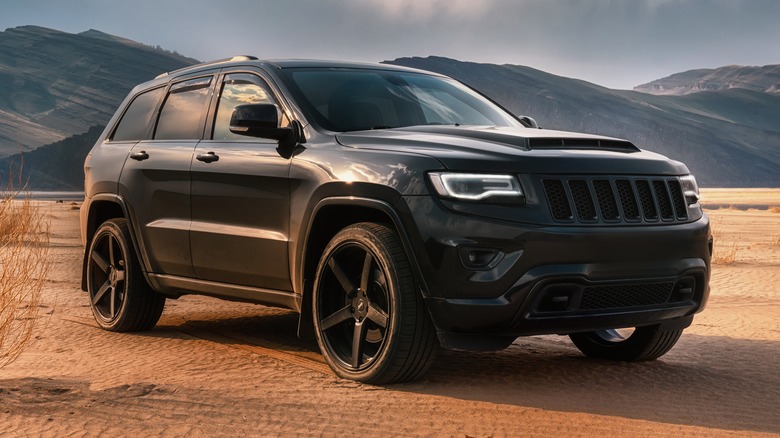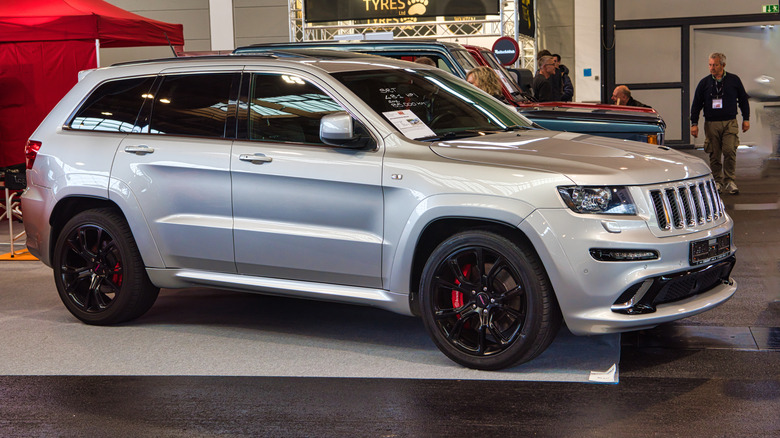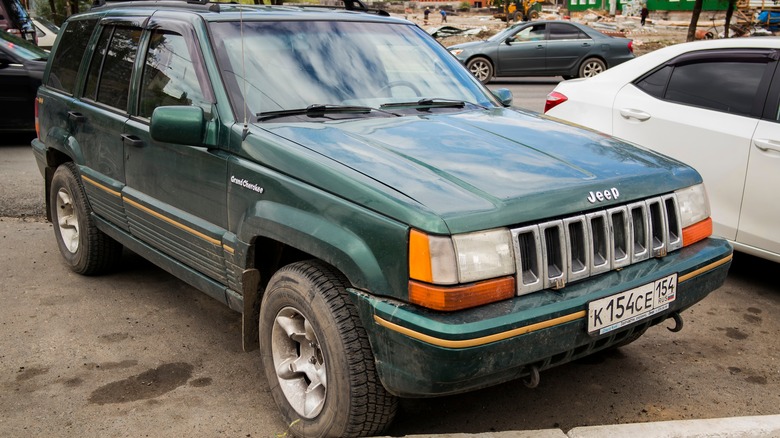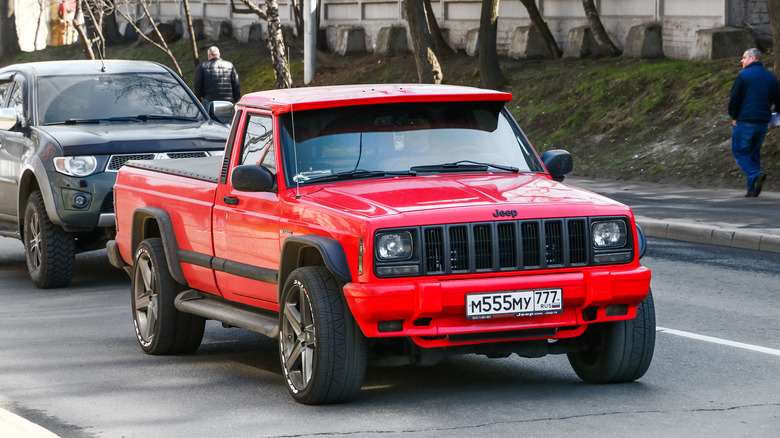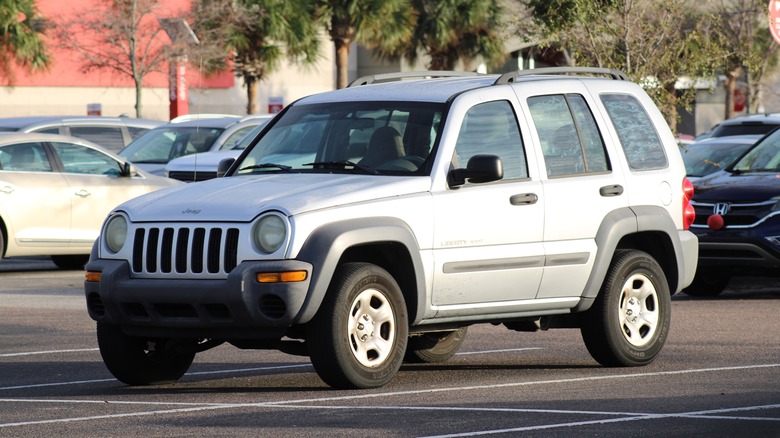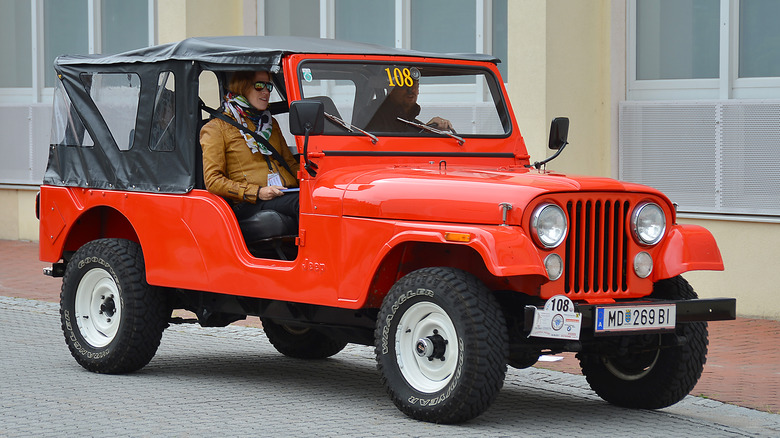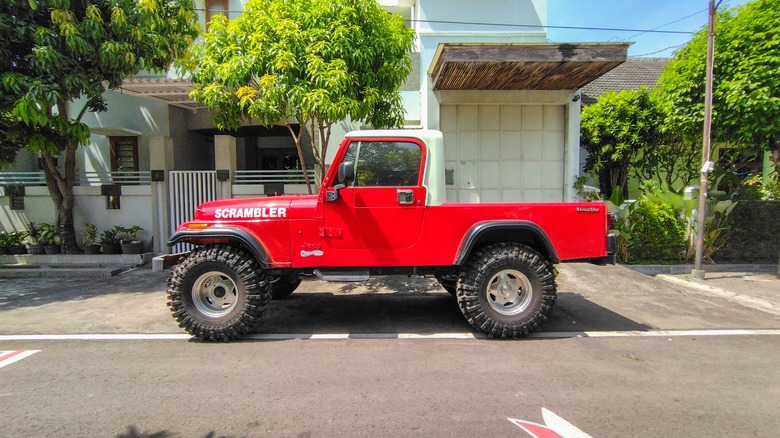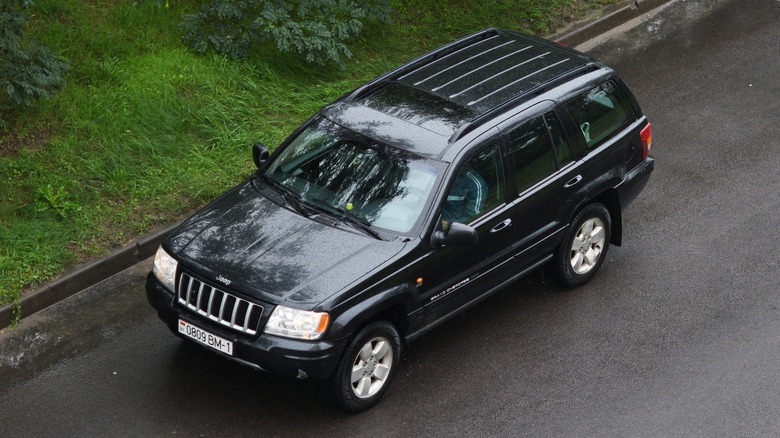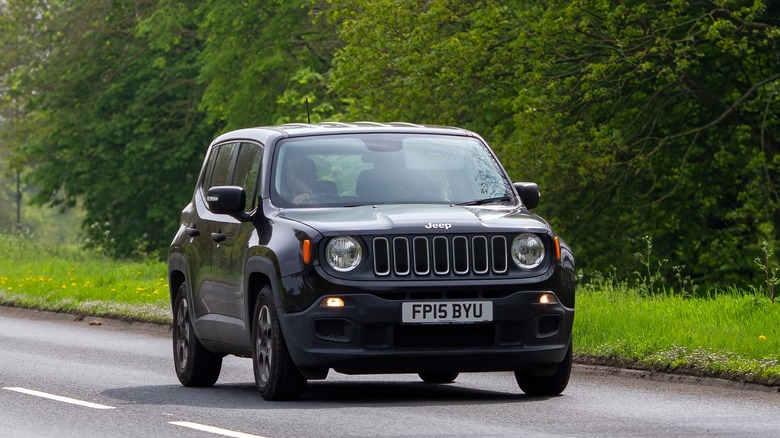9 Jeeps Powered By Non-Jeep Engines
Jeep has offered plenty of engines choices over the years, from diesels to V8 powerhouses. Their focus wasn't on adding engines to their vehicles, it was a move to elevate their lineup and integrate cutting edge technology into their cars. By collaborating with engine specialists Jeep successfully kept pace with regulations and environmental considerations while staying true to the essence of the Jeep brand.
These engines from other manufacturers kept Jeep competitive and elevated them to off road champions — they became known as a brand whose vehicles that could conquer trails while still offering a comfortable ride on the highway. The range of engine options from Jeep tells a story as rugged and daring as the brand itself.
From tackling the Rubicon Trail to reimagining what off road performance means, Jeep's engine choices have left a mark on history. They didn't just win over skeptics; they ignited passion among a community of enthusiasts. However, not all Jeeps are equipped with engines designed in-house — here are a few well known models that had a powerplant built by another company.
Jeep Grand Cherokee (WK2) — 3.0L V6 Diesel (Mercedes-Benz)
The Grand Cherokee WK2 generation received an enhancement in its towing capacity thanks to the Mercedes-Benz OM642 engine. This 3.0 liter turbocharged diesel V6 engine generated 218 horsepower and an impressive 376 lb-ft of torque, making it a strong performer. With an 18:1 compression ratio and a variable geometry turbocharger it provided power across the RPM range.
The OM642 was not just focused on power, as it also introduced improved fuel efficiency to the mix offering Grand Cherokee owners a blend of performance and fuel economy. In a market where diesel powered SUVs were uncommon this engine gave the Grand Cherokee a distinctive edge. It appealed to buyers seeking Jeep's off-road capabilities paired with haul cruising efficiency.
By incorporating this German engineered powerplant into an icon it showcased the nature of the automotive industry and Jeeps commitment to sourcing top quality components regardless of their origin. The OM642's combination of power, efficiency and sophistication made it a standout choice in the Grand Cherokee lineup highlighting that innovation can arise from outside sources.
Jeep Wrangler (JK) — 3.6L Pentastar V6 (Chrysler)
The 2012 mid-generation update for the JK Wrangler included a boost in power delivered by Chrysler's 3.6 liter Pentastar V6 engine. This engine, already well received in Chrysler vehicles, turned out to be a match for the iconic Jeep off roader. With 285 horsepower and 260 lb-ft of torque the Pentastar outperformed the 3.8 liter engine it replaced by a decent margin.
The engine's design incorporated several NVH-reducing features, including a 60-degree, deep-skirt, die-cast-aluminum cylinder block with six-bolt main caps, a structural windage tray, and a silent chain timing drive. This resulted in a smoother, more refined driving experience both on and off the road.
The Pentastar's versatility allowed it to excel in various driving conditions, from crawling over boulders to cruising on highways, while also offering improved fuel efficiency. This successful integration of the Pentastar V6 into the Wrangler demonstrated Jeep's ability to modernize its iconic off-roader without compromising its core attributes, satisfying both daily commuters and weekend adventurers alike.
Jeep Grand Cherokee (ZJ) — 5.2L V8 (Chrysler)
The first-generation Jeep Grand Cherokee ZJ needed an engine to help it make a mark in the luxury SUV market. Jeep decided to meet this need by introducing the Chrysler made 5.2 liter V8 engine, often referred to as the 318 engine by enthusiasts in reference to its displacement in cubic inches. This dependable engine was incorporated into the Grand Cherokee delivering around 210 horsepower and 285 lb-ft of torque.
Although these figures may appear modest by today's standards they were quite impressive back in the early '90s. This V8 choice positioned Jeep's SUV alongside more expensive rivals providing V8 performance at a more affordable price point. Beyond its power capabilities the 5.2 liter V8 offered reliability for commutes and weekend escapades due to its valve design and sturdy construction.
Featuring a sequential multi point fuel injection system this Chrysler V8 delivered power throughout its rpm range. It illustrated how Jeep could effectively utilize resources from its parent company to compete admirably in market segments giving the Grand Cherokee both strength and sophistication to match its ambitions. The incorporation of this engine played a role in establishing the Grand Cherokee as a player in the luxury SUV sector and paving the way for its ongoing success.
Jeep Comanche (MJ) — 2.5L I4 Diesel (Peugeot)
In the mid-1980s, the Jeep Comanche pickup truck surprised some markets with a diesel variant powered by a 2.5 liter inline four engine sourced from French automaker Peugeot. This unconventional combination of a American truck and a European engine showcased Jeep's willingness to take risks and try new things in the '80s.
While not a high performance engine this French motor excelled in fuel efficiency. It offered the low end torque that diesel fans appreciate making it a perfect choice for Comanche drivers who rely on their trucks for work. The engine's blend of a cast iron block and aluminum cylinder head achieved a mix of sturdiness and lightweight design. With its injection system and glow plugs it guaranteed starts in all conditions while its impressive torque made it well-suited for towing and off-road escapades.
The presence of the Peugeot diesel engine in the Comanche demonstrated Jeep's openness to exploring options beyond boundaries when selecting powertrains for an iconic American vehicle like a pickup truck. While this Franco-American collaboration might have raised some eyebrows it offered Comanche buyers a choice in a market often dominated by V8 engines.
Jeep Liberty (KJ) — 2.8L I4 Diesel (VM Motori)
Between 2005 and 2006, the Jeep Liberty (also known as the Jeep Cherokee outside North America) introduced a 2.8 liter inline-four turbo-diesel engine from specialist Italian diesel engine manufacturer VM Motori. This engine provided compact SUV buyers with a diesel choice in a segment mostly filled with gasoline engines.
The VM Motori diesel engine was not short on power and could deliver 160 horsepower and a sturdy 295 lb-ft of torque. These numbers gave the Liberty towing capability and off-road performance enhancing its mix of comfort and weekend adventure potential. Equipped with rail injection and a variable geometry turbocharger this engine offered smooth power delivery and impressive fuel efficiency. Its iron block combined with an aluminum head struck a balance between durability and weight while a chain driven camshaft minimized maintenance requirements.
This collaboration gave Liberty owners the benefits of diesel efficiency and torque within Jeep's package, presenting a distinctive option in the American compact SUV market.
Jeep CJ-6 — V6 (Buick)
When Jeep extended the classic CJ-5 to create the CJ-6, some versions were given a power boost in the form of a V6 engine from General Motors' Buick division.
The engine in question was the 225-inch Dauntless V6 delivering around 160 horsepower and 235 lb-ft of torque. Known for its 90-degree configuration and distinctive firing sequence it offered a significant performance upgrade compared to the 134 cubic inch Hurricane four cylinder with its 72 horsepower output. The compact size and respectable power output of the Buick V6 made it a fitting choice for the CJ 6 providing more power than the four cylinder without compromising weight distribution.
The increased torque especially benefited enthusiasts who enjoyed off roading enhancing low end power for navigating obstacles. This engine swap illustrated that Jeep was willing to draw inspiration from competitors when it made sense, combining features from different brands into one impressive package.
Jeep CJ-8 Scrambler — Iron Duke (GM)
Between 1981 and 1986 the CJ-8 Scrambler was equipped with GM's 2.5-liter four-cylinder engine best known as the Iron Duke. This engine was widely used in vehicles like the Chevy Camaro and the Pontiac Fiero, also found its way into Jeep's CJ-based pickup.
In its Scrambler configuration the Iron Duke delivered around 82 horsepower at 4,000 rpm. While that number may not seem impressive compared to today's standards, it was competitive for trucks in the early '80s that prioritized fuel economy over speed. Despite its low power output, the Iron Duke was well regarded for its durability, a quality that resonated well with Jeep's ethos.
Thanks to its low end torque performance the Iron Duke proved to be adept off road excelling in slow speed maneuvers where power isn't as crucial as control. Including the Iron Duke in the Scrambler lineup demonstrated Jeep valued a useful engine regardless of its origins from a competitor.
Jeep Grand Cherokee (WK) — 5.7L Hemi V8 (Chrysler)
The 2005 Jeep Grand Cherokee WK was offered with the option of a significant performance enhancement from Chrysler's 5.7 liter Hemi V8 engine. This modern interpretation of a muscle car powerplant transformed the Grand Cherokee into a high performance SUV that delivered 330 horsepower and 375 lb-ft of torque.
With a compression ratio of 9.5:1 and a pushrod valve train operating two valves per cylinder, it seamlessly blended classic muscle car lineage with engineering. The inclusion of port fuel injection struck a balance between power output and fuel efficiency. Chrysler's Multi Displacement System (MDS) allowed the Hemi to deactivate four cylinders in order to enhance fuel economy. This feature provided Grand Cherokee drivers with V8 power with V6-like efficiency during drives.
When Jeep decided to stuff a Hemi V8 into the Grand Cherokee, they weren't just building an SUV — they were creating a four-wheeled legend. The Grand Cherokee is what happens when you take a muscle car attitude, inject it into a luxury SUV, and then teach it how to climb mountains.
Jeep Renegade — Fiat engines
The Jeep Renegade crossover is the only Jeep to be built entirely outside of North America — its production happens primarily in Italy, Brazil, and China — and relies on the Fiat family for its various engine options. The base engine is a turbocharged 1.4 liter MultiAir engine that delivers 160 horsepower and 170 lb-ft of torque. Its innovative MultiAir technology uses electrohydraulic valve actuation to enhance both power and efficiency.
Another interesting powerplant option available for customers in the U.S. is a 2.4 liter TigerShark engine that offers 184 horsepower and 177 lb-ft of torque striking a balance between power and fuel efficiency for both city driving and long distance trips. Both engines highlight Fiat's expertise in designing efficient engines showcasing the benefits of brand partnerships.
While branded as a Jeep, the Renegade stands out in the crossover segment thanks to its character influenced by its Fiat connection.
